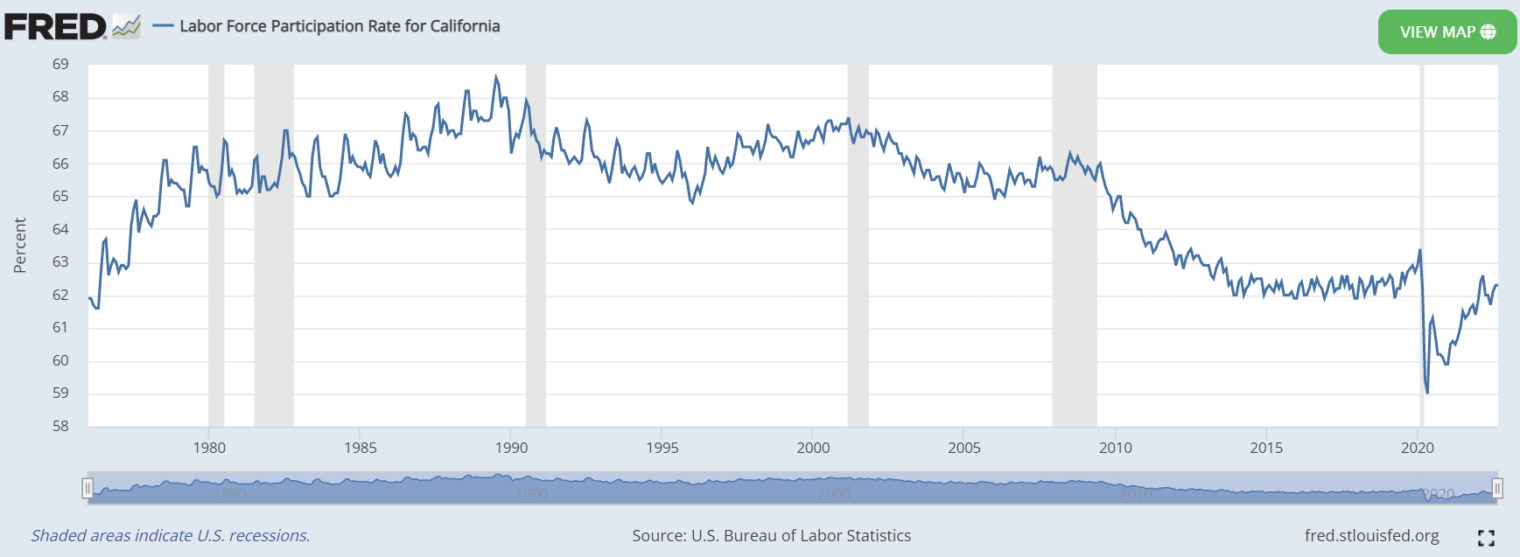I was chatting with a guy who works at a Los Angeles-based manufacturer about the challenge of building back up to full production. “One issue is that if you got COVID at any time during the past two and a half years,” he said, “California assumes that you got it at work. Then if you say that you have Long COVID you will get years of Worker’s Compensation payments. Especially older workers were prone to making Long COVID Worker’s Comp claims. and, if you add up their Social Security, Worker’s Comp, and 401k, it wouldn’t make any sense for them to return to the factory.”
Fact check: this law firm says “with COVID-19, there is a rebuttable presumption of a workplace connection. An employer has the burden of proving that a claimant was not exposed to COVID-19 in the relation to their employment.”
Let’s look at the California labor force participation rate. California has one of the nation’s youngest populations (one reason the COVID-tagged death rate was lower than in some other states) and we’d therefore expect the labor force participation rate to be higher than the U.S. average. Yet it isn’t:
We see participation rising as women entered the labor market (70s and 80s) and then falling as women were offered the opportunity to earn cash via divorce litigation or simply having sex with a married dentist (state child support formulas guaranteeing profits were introduced around 1990; history and also “Divorce laws and the economic behavior of married couples” (Voena 2016)). Then we see the downward trend from all of the enhancements to the welfare state that started in 2009 (see Book Review: The Redistribution Recession for how Americans could find themselves in a higher-than-100-percent tax bracket as a consequence of means-tested programs, including mortgage relief). And right now we are bumping along at 62 percent in one of the best labor markets for workers in history. That’s the same as the national rate despite California being 1.5 years younger (median) than the U.S. overall.

I would be interested in a follow-up article on why the “guy who works at a Los Angeles-based manufacturer” does not consider moving the manufacturing portion to a state that would limit the worker’s compensation claims for COVID Long illness.